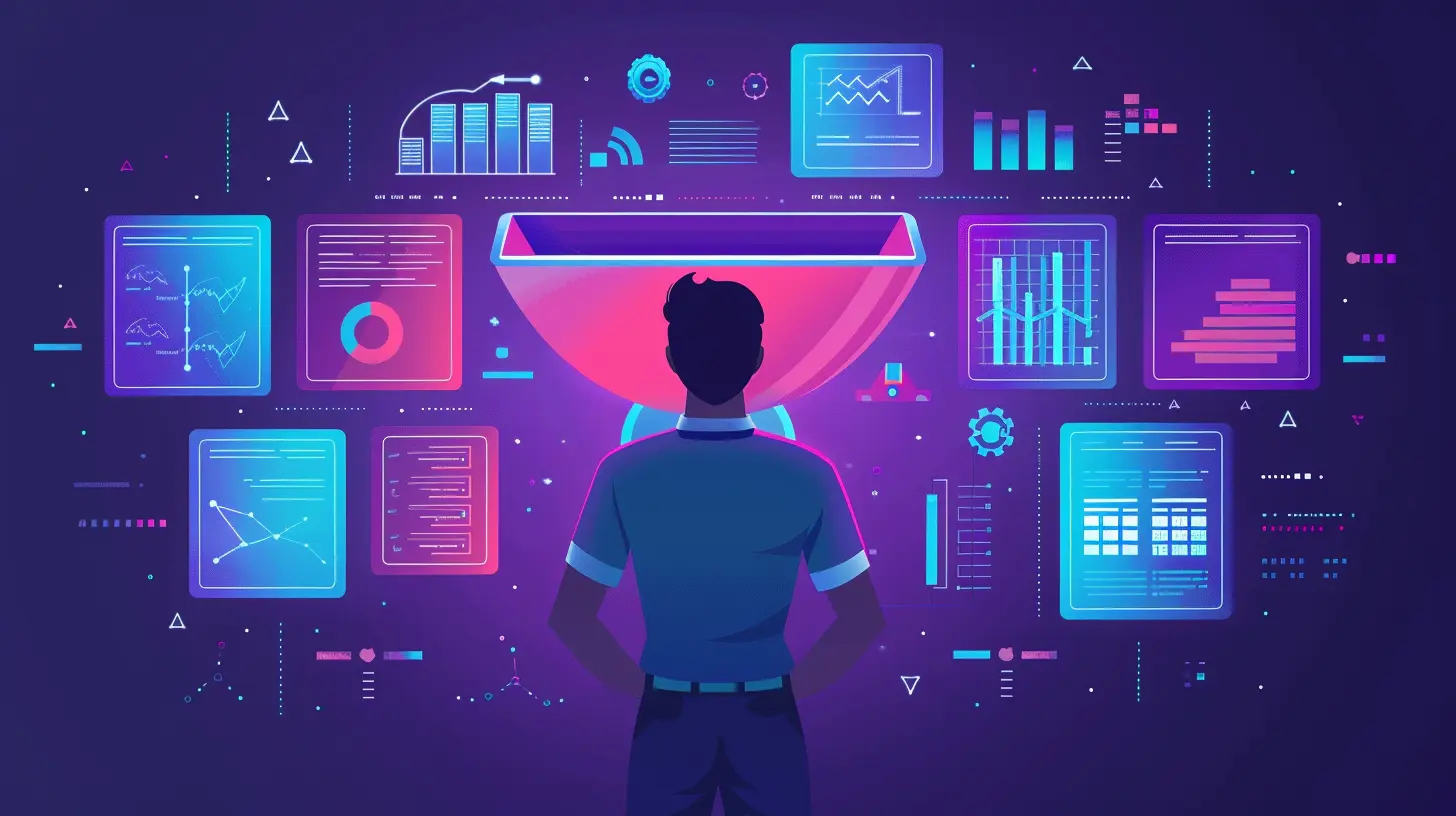The Role of Data-Driven Marketing in Lead Generation
13 November 2025
The digital age has brought us many things. Food delivery at the tap of a button. Streaming movies whenever we feel like it. Smart gadgets that know us better than we know ourselves. But one of the most game-changing evolutions—especially in the world of business—is how we handle marketing. And at the heart of this revolution? Data.
That’s right. Data has become the fuel that powers marketing engines. And when it comes to lead generation, data-driven marketing isn’t just helpful—it’s essential.
Let’s break down how it all works, why it matters, and how you can use it to supercharge your business pipeline.
What Is Data-Driven Marketing Anyway?
Let’s not overcomplicate it. Data-driven marketing is exactly what it sounds like—marketing strategies and decisions that are powered by data.Instead of relying on gut feelings or dated assumptions, marketers now have access to tons of raw data. Think customer behavior, online activity, demographics, purchase history, social media interactions—you name it. That data gets analyzed, crunched, and translated into strategies that help you attract, engage, and convert leads more efficiently.
Imagine being able to hand your sales team a list of potential customers who are not only interested in your product but are also ready to buy. That’s the magic of data-driven marketing.
Why Traditional Marketing Falls Short Now
Let’s have some real talk for a second—traditional marketing? It had its day. Billboards, cold calls, mass emails sent to a giant list of people who don’t know or care about your brand… yeah, that’s not cutting it anymore.People are smarter, savvier, and more skeptical now. They expect personalized experiences. If your marketing feels generic or off-target, you’ve lost them.
Here’s the kicker: Traditional marketing guesses. Data-driven marketing knows.
The Real Power: Turning Data Into Leads
So how does data-driven marketing take a bunch of numbers and turn them into qualified leads? Let’s dig in.1. Audience Segmentation Gets Smarter
Imagine trying to sell the same product the same way to a college student, a working mother, and a retired veteran. Crazy, right?With data, you can break your audience into segments based on behavior, interests, location, age, and even what websites they’ve visited recently. That means you’re not just throwing spaghetti at the wall anymore. You’re serving it to the right people, at the right time, with the right message.
Segmentation helps you:
- Tailor your messaging
- Personalize your offers
- Focus your budget where it matters
2. Predictive Analytics Stops You From Guessing
You know how Netflix can predict what you’ll want to watch next? That’s predictive analytics in action. The same principle applies to data-driven marketing.By tracking past behaviors—like clicks, time spent on site, download patterns—you can start to predict what a potential customer will do next. Will they sign up for your newsletter? Buy your product? Bounce?
And when you know that, you can nudge them along with the perfect message at the perfect time.
3. Improved Lead Scoring
All leads are not created equal. Some are browsing. Some are curious. And some are ready to pull out their credit card right now.Data helps you score leads based on how “hot” they are. Someone who visits your pricing page three times? That’s a hot lead. Someone who downloaded your free eBook but hasn’t opened any emails? Probably colder.
This helps:
- Prioritize your follow-ups
- Align sales and marketing teams
- Improve conversion rates
4. Optimizing Campaigns on the Fly
Back in the day, once you launched a marketing campaign, that was it. You waited and hoped it worked. Not anymore.With real-time data, you can see what’s working and what’s not—while the campaign is still running. Click-through rates dropping? Switch up the headline. One audience converting better than the other? Funnel more budget there.
You’re not just flying the plane—you’re building it while you’re in the air. And with data, you can do that safely.
Where Does All This Data Come From?
Glad you asked. Chances are, you’re surrounded by more data than you realize.Here are the key sources:
- Website Analytics (Google Analytics is your best friend)
- Social Media Insights (Facebook Pixel, Twitter Analytics, etc.)
- Email Engagement Metrics (Open rates, click-throughs, bounces)
- CRM Tools (Salesforce, HubSpot, etc.)
- Customer Surveys & Feedback
- Third-party Data Platforms (Demographic and behavioral data from external sources)
You don’t need ALL the data to get started—just the right data. Think quality over quantity.
Real-Life Example: The Power of Data in Action
Let’s say you run a SaaS company offering productivity tools for remote teams.Your data tells you:
- Most of your site visitors are managers aged 30–45
- They spend 5+ minutes on blog posts about team collaboration
- The highest click-through rates come from LinkedIn ads targeting HR professionals
- Users who download a “Remote Team Toolkit” are twice as likely to book a demo
Armed with this info, you:
- Publish more content about team collaboration
- Run targeted LinkedIn ads only to HR professionals
- Offer the toolkit in exchange for email signup
- Set an automated email sequence for toolkit downloaders
Boom—more qualified leads, less guesswork, and a stronger ROI.
Common Pitfalls To Avoid
Now, before you go all-in on data, a few warnings from the trenches:1. Data Overload
Yes, having data is great. Too much data? Not so much. You can get paralyzed if you try to analyze every single metric. Focus on the KPIs that actually matter—like leads generated, cost per lead, conversion rate, and customer lifetime value.2. Dirty Data = Bad Decisions
Not all data is good data. If your CRM is full of outdated contacts and duplicate entries, your whole strategy could fall apart. Make sure your data is clean, current, and accurate.3. Forgetting the Human Side
Don’t let numbers blind you to the humans behind them. Data should enhance your understanding of people, not replace it. Keep messaging authentic, helpful, and human.Benefits That Go Beyond Just More Leads
Lead generation is the headline benefit, sure. But data-driven marketing has some juicy side perks too:- Better ROI – Every dollar you spend is smarter.
- Faster Decision Making – You don’t have to guess.
- Stronger Customer Relationships – Because personalization, duh.
- Scalability – What works today can grow with you tomorrow.
It’s not just about quantity of leads, it’s about quality—and efficiency.
The Tech That Makes It All Happen
We can’t talk data-driven anything without talking tech. Here's what you might need:- CRM Platforms (HubSpot, Zoho, Salesforce)
- Marketing Automation Tools (Mailchimp, ActiveCampaign, Marketo)
- Analytics Software (Google Analytics, Hotjar, Heap Analytics)
- Ad Platforms with Targeting (Google Ads, Facebook Ads, LinkedIn Ads)
- Data Visualization Tools (Tableau, Google Data Studio)
Pick the tech that fits your size, budget, and goals. Don’t just buy every shiny new tool.
The Future of Lead Generation Is Data-Driven
If you’re still relying on guesswork and outdated tactics to generate leads, you’re not just falling behind—you’re leaving money on the table.Data-driven marketing allows you to connect the dots between audience behavior and business strategy. It’s not a magic wand, but it’s pretty close.
Lead generation isn’t about casting a wide net anymore. It’s about using data like a metal detector on a gold-filled beach—you find the right people, at the right time, with the right message.
So, are you ready to stop shooting in the dark and start targeting with laser precision?
Because your leads are out there. You just need the data to find them.
all images in this post were generated using AI tools
Category:
Lead GenerationAuthor:

Baylor McFarlin

